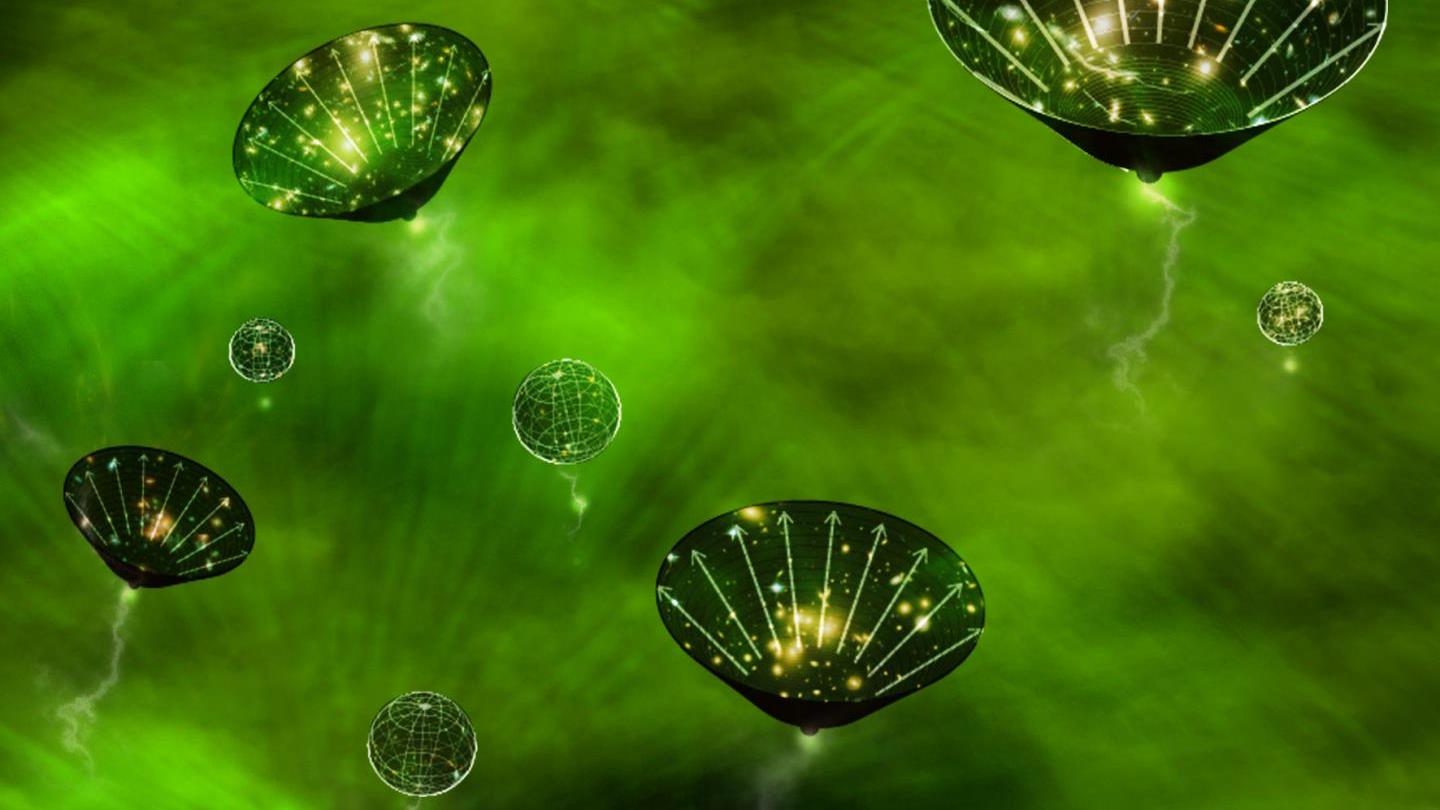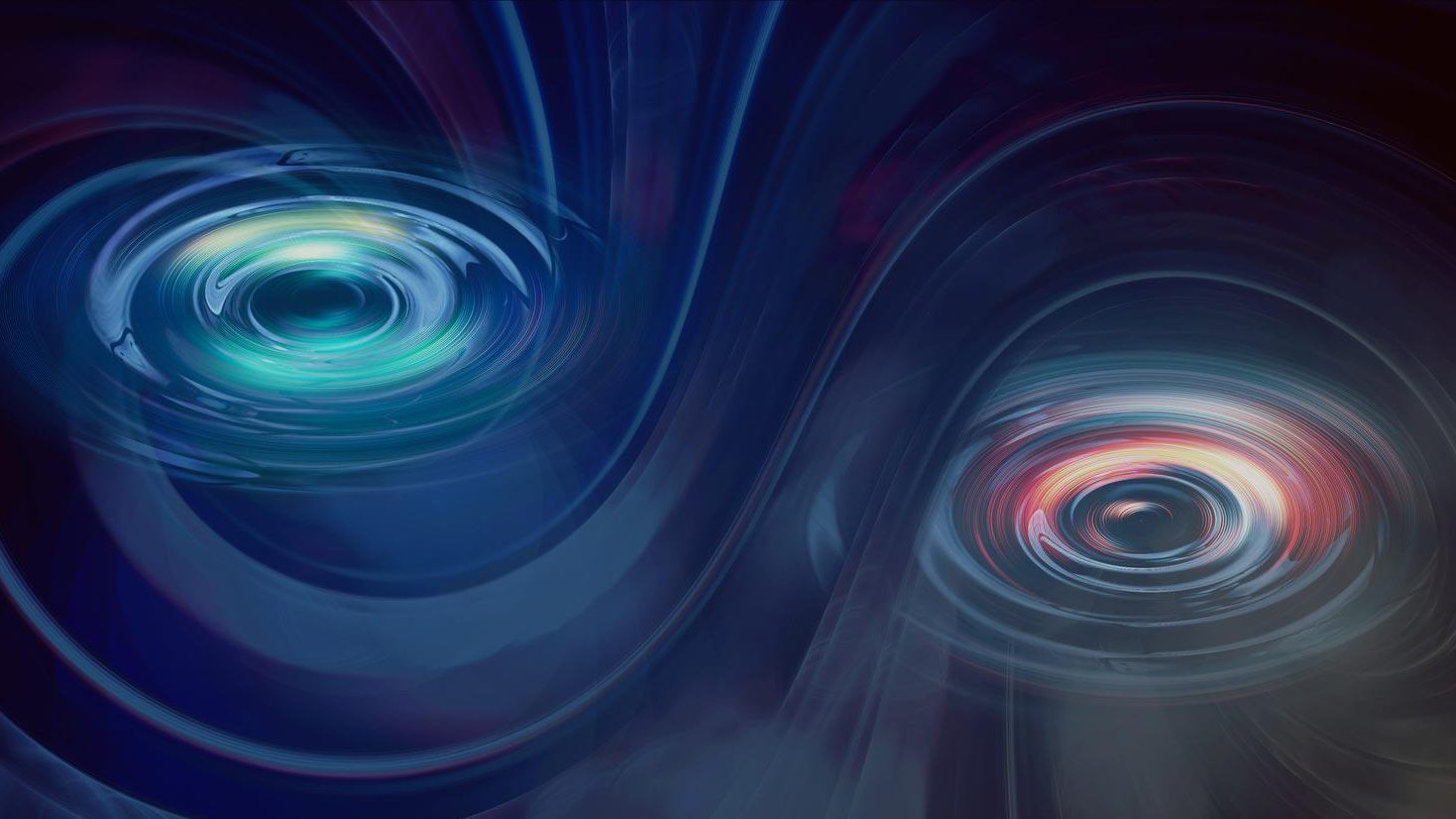Will physics ever prove that gravitons are real?

- Many physicists speculate that a force-carrying particle exists for gravity and have named this theoretical particle the “graviton.”
- However, evidence for the graviton remains elusive, likely due to the extreme weakness of gravity compared to the other fundamental forces.
- Other quantum field theories have been validated through confirmatory evidence, but physicists must find such evidence for quantum gravity before confirming the existence of gravitons.
In 2009, the British journalist Ian Betteridge wrote an article in which he asserted his maxim that any headline ending in a question mark can be answered with a no. The maxim has come to be called Betteridge’s law, but this article will demonstrate that, as with so many other proverbs, the truth gets murkier once applied to real-world situations.
Gravitons are theoretical subatomic particles that some scientists think transmit the force of gravity. If they exist, they are vanishingly small and have no mass or electric charge. To generate gravity, the thinking goes, gravitons jump from one massive object to another, drawing the objects ever closer to each other. Although no experimental evidence for gravitons exists, they remain a respectable concept in the world of professional physicists.
But why do most physicists suspect that gravitons are real even if they lack the confirmatory evidence necessary to support that idea? To answer that, we first need to understand our best current theory of gravity, as well as some of the lessons of modern quantum theory.
The first professional theory of gravity was proposed back in the 1680s by Isaac Newton. His published equations have proven accurate enough that NASA still uses them today to predict the motion of space probes. However, Newton’s ideas have a big conceptual problem: They don’t really explain anything. They just say that massive objects attract one another, and his equations make that statement quantitative.
The situation changed in the early 1900s when Albert Einstein published his general theory of relativity, which remains the most accurate theory of gravity devised thus far. This theory says that matter distorts the shape of space itself. Just as the path of an automobile follows the terrain of even the curviest road, the motion of the stars and planets are examples of objects following the bumps and curves of bent space.
Einstein’s theory makes similar predictions to Newton’s, although Einstein’s is more accurate in situations where gravity is strong. General relativity has also been thoroughly tested and appears an accurate description of gravity under most conditions.
“Most conditions” doesn’t cover all conditions, though. When Einstein’s theory is applied to the submicroscopic world of atoms and electrons, it utterly fails. The theory predicts infinities, and infinity is the signature mark of a scientific model being pushed beyond the realm of physical reality and into mathematical abstraction. As such, scientists have yet to develop a theory of gravity that applies in the world of the ultra-small. They have, however, drafted a placeholder name for such a model: “quantum gravity.”
Scientists have also formed quantum-level explanations for the other three known fundamental forces: electromagnetism, and the strong and weak nuclear forces. The explanations for these forces are generically called “quantum field theories,” and unlike quantum gravity, they have been validated with confirmatory evidence.
Because no accepted theory of quantum gravity exists, scientists are free to indulge their imaginations. One common approach is to bootstrap quantum gravity to the successful quantum field theories. The idea is that if a technique had success for the other known fundamental forces, then perhaps the same approach will describe quantum gravity, too.
One shared feature of the successful quantum field theories is that they all require one or more subatomic particles to mediate the force that they describe. The electromagnetic force is transmitted by the exchange of photons between subatomic particles (a photon is a particle of light). The strong nuclear force is transmitted by a particle called a gluon, so named because it “glues” particles together. The third quantum force, the weak nuclear force, requires two particles, the prosaically named W and Z bosons.
Given that the quantum theories for the other forces all require a particle to transmit them, scientists believe this will likely be true for gravity, as well. While the force-particle of gravity has not been observed, scientists have christened it the “graviton.”
And since scientists know a lot about gravity, they can surmise many of the graviton’s potential properties. Because the range of gravity is infinite, gravitons must be massless. Because gravity ignores electricity, gravitons should be electrically neutral. Finally, because gravity is an attractive force, the graviton should have a subatomic spin of 2 (in contrast with the other quantum force-carrying particles, all of which have a spin of 1).
While surmising the nature of a particle is all well and good, until such predictions are validated by experiment, there is no reason to take them seriously. So, what are the prospects for detecting gravitons?
The currently known laws of physics offer a sense of how difficult it will be to validate the theory. For instance, the force of gravity is extraordinarily weak compared to the other known forces. While the number depends a bit on the circumstances under which you test it, it turns out that gravity is in the ballpark of 1040 times weaker than electromagnetism. This weakness makes it difficult to detect gravitons. In any conceivable measurement involving subatomic particles, the force of electromagnetism will dominate and hide away any gravitational effects.
To generate an appreciable gravitational force, many atoms need to be working together to create it. A bonus to this approach is that atoms are electrically neutral, so the electromagnetic force will be zero. However, once you have many atoms working together, you are no longer probing quantum sizes and therefore are no longer testing quantum gravity.
In fact, if the simplest ideas of quantum gravity apply, scientists may never be able to validate a theory of quantum gravity. On subatomic scales, the force may simply prove too minute to ever be observed.
This returns us to the question headlining the article: Will physics ever prove that gravitons are real? There is certainly ample reason to believe that they may. A theory of gravity that works on quantum-size scales must exist, and all other quantum theories require particles to generate their force. On the other hand, there is currently no experimental evidence to confirm or falsify gravitons.
On the upside, there is no fundamental barrier to testing quantum gravity, meaning that some future approach may be able to answer the question. However, for the foreseeable future, the question cannot be answered with either a yes or no. The only honest answer is maybe.





